Men’s style is often overlooked, but it plays a crucial role in one’s confidence and overall image. The way a man dresses can have a significant impact on how he is perceived by others and how he feels about himself. When a man feels good about his appearance, it can boost his self-esteem and give him the confidence to tackle any situation. In this article, we will explore the fundamentals of men’s style, including fit, color, and fabric. We will also discuss how to dress for different body types, build a versatile wardrobe, and accessorize like a pro. Whether you’re dressing for the office, a special occasion, or a casual event, this guide will help you navigate the world of men’s style with ease.
Key Takeaways
- Understanding the fundamentals of men’s style is crucial for creating a polished and put-together look.
- Dressing for your body type is key to finding the perfect fit and highlighting your best features.
- Building a versatile wardrobe with essential pieces is important for creating a variety of stylish outfits.
- Mixing and matching different pieces can help you create stylish outfits with ease.
- Accessorizing like a pro can add the finishing touches to your look and elevate your style.
Understanding the Fundamentals of Men’s Style
When it comes to men’s style, there are a few key fundamentals to keep in mind. First and foremost is fit. No matter how stylish an outfit may be, if it doesn’t fit properly, it won’t look good. It’s important to find clothes that flatter your body type and fit well in all the right places. This means paying attention to the length of your pants, the width of your shoulders, and the fit of your shirts. When clothes fit well, they not only look better but also make you feel more comfortable and confident.
Another important aspect of men’s style is color. The colors you choose to wear can have a big impact on your overall look. It’s important to choose colors that complement your skin tone and hair color. For example, if you have fair skin and light hair, you may want to stick with lighter colors like pastels or neutrals. On the other hand, if you have darker skin and hair, you can pull off bolder colors like jewel tones or earth tones. Experiment with different colors to find what works best for you.
Fabric is also an important consideration in men’s style. The fabric you choose can affect the overall look and feel of your outfit. For example, a suit made from a high-quality wool will look and feel much better than one made from a cheap synthetic material. It’s worth investing in well-made pieces that are made from quality fabrics. Not only will they last longer, but they will also look more polished and put together.
Determining your personal style is another key aspect of men’s style. Your personal style is a reflection of your personality and individuality. It’s important to choose clothes that you feel comfortable and confident in. Take some time to think about the image you want to project and the message you want to convey through your style. Do you prefer a classic and timeless look, or are you more drawn to trendy and fashion-forward pieces? Once you have a clear idea of your personal style, it will be much easier to shop for clothes that align with your aesthetic.
Dressing for Your Body Type: Finding the Perfect Fit
Finding clothes that fit well is essential for looking stylish and put together. When clothes fit properly, they flatter your body type and enhance your best features. On the other hand, ill-fitting clothes can make you look sloppy and unkempt. To determine your body type, start by measuring your shoulders, chest, waist, and hips. Once you have these measurements, you can use them as a guide when shopping for clothes.
If you have a slim build, opt for clothes that are more fitted to create the illusion of a broader frame. Look for shirts with darts or tapered cuts that accentuate your waistline. Avoid baggy or oversized clothing, as it can make you appear smaller than you actually are.
If you have a muscular build, choose clothes that highlight your physique without being too tight or restrictive. Look for shirts with a bit of stretch or give to accommodate your broader shoulders and chest. Avoid clothes that are too tight, as they can make you look bulky and uncomfortable.
If you have a larger build, opt for clothes that are more relaxed and forgiving. Look for shirts with a bit of extra room in the midsection to accommodate your waistline. Avoid clothes that are too tight or clingy, as they can draw attention to areas you may want to downplay.
Regardless of your body type, it’s important to pay attention to the length of your pants. They should hit right at the top of your shoes, with a slight break in the fabric. Avoid pants that are too long or too short, as they can throw off the proportions of your outfit.
Building a Versatile Wardrobe: Essential Pieces Every Man Should Own
| Essential Pieces | Description |
|---|---|
| White Dress Shirt | A classic, versatile shirt that can be dressed up or down. |
| Dark Wash Jeans | A staple in any wardrobe, these jeans can be worn casually or dressed up with a blazer. |
| Navy Blazer | A versatile piece that can be worn with jeans or dress pants for a more formal look. |
| Brown Leather Shoes | A timeless shoe that can be worn with dress pants or jeans. |
| Neutral Colored Chinos | A comfortable and stylish alternative to jeans that can be dressed up or down. |
| Crew Neck Sweater | A cozy and stylish sweater that can be worn with jeans or dress pants. |
| Leather Belt | A classic accessory that can be worn with dress pants or jeans. |
| White Sneakers | A versatile shoe that can be worn with jeans or chinos for a casual look. |
Building a versatile wardrobe is key to looking stylish and put together in any situation. There are a few essential pieces that every man should have in his wardrobe. These pieces can be mixed and matched to create a variety of different outfits for different occasions.
First and foremost, every man should have a well-fitting suit. A suit is a timeless and classic piece that can be worn for formal events, job interviews, or important meetings. Opt for a suit in a neutral color like navy or charcoal gray, as these colors are versatile and can be dressed up or down depending on the occasion.
In addition to a suit, every man should have a few dress shirts in his wardrobe. Dress shirts can be worn with suits for formal occasions or paired with chinos or jeans for a more casual look. Look for dress shirts in classic colors like white or light blue, as these colors are timeless and can be worn with just about anything.
A good pair of jeans is another essential piece that every man should own. Look for jeans in a dark wash with minimal distressing, as these jeans are more versatile and can be dressed up or down depending on the occasion. Opt for a slim or straight leg fit, as these styles are flattering on most body types.
A few basic t-shirts and polo shirts are also essential for a versatile wardrobe. Look for t-shirts in neutral colors like white, black, or gray, as these colors can be paired with just about anything. Polo shirts are a great option for a slightly dressier look and can be worn with jeans or chinos for a more polished outfit.

When it comes to outerwear, every man should have a few key pieces in his wardrobe. A classic trench coat is a timeless and versatile piece that can be worn with both formal and casual outfits. A leather jacket is another essential piece that can add a cool and edgy vibe to any outfit. Finally, a lightweight jacket or blazer is perfect for layering and can be worn with jeans or chinos for a more polished look.
Mixing and Matching: Creating Stylish Outfits with Ease
Once you have the essential pieces in your wardrobe, it’s time to start mixing and matching to create stylish outfits. The key to mixing and matching is to choose pieces that complement each other in terms of color, pattern, and style.
Start by choosing a focal point for your outfit. This could be a statement piece like a bold patterned shirt or a colorful pair of pants. Once you have your focal point, choose other pieces that complement it without overpowering it. For example, if you’re wearing a bold patterned shirt, opt for neutral pants and accessories to let the shirt take center stage.
Layering is another important aspect of mixing and matching. Layering not only adds visual interest to an outfit but also allows you to adjust your clothing based on the weather or the occasion. Start with a base layer like a t-shirt or dress shirt, then add layers like sweaters, cardigans, or jackets depending on the temperature. Experiment with different combinations to find what works best for you.
Accessories are another great way to add interest and personality to your outfits. A simple accessory like a watch, belt, or pocket square can elevate a basic outfit and make it look more polished and put together. When choosing accessories, opt for pieces that complement your outfit without overpowering it. For example, if you’re wearing a bold patterned shirt, choose a simple and understated watch or belt to balance out the look.
Accessorizing Like a Pro: Adding the Finishing Touches to Your Look

Accessories are an often overlooked but important aspect of men’s style. The right accessories can add the finishing touches to your look and take your outfit from ordinary to extraordinary. When choosing accessories, it’s important to consider the occasion, the colors in your outfit, and your personal style.
One of the most important accessories for men is a watch. A watch not only serves a practical purpose but also adds a touch of sophistication and elegance to any outfit. When choosing a watch, consider the style, color, and size that best suits your personal taste and lifestyle. A classic leather strap watch is a timeless choice that can be worn with both formal and casual outfits. On the other hand, a stainless steel or metal strap watch can add a modern and edgy touch to your look.
Belts are another important accessory that can add polish and style to your outfit. When choosing a belt, opt for one that matches the color of your shoes for a cohesive look. If you’re wearing a suit or dress pants, choose a belt that is slim and understated. On the other hand, if you’re wearing jeans or chinos, you can opt for a wider belt with more texture or detail.
Pocket squares are another great accessory that can add a touch of elegance and sophistication to any suit or blazer. When choosing a pocket square, consider the colors and patterns in your outfit. A pocket square should complement your tie or shirt without overpowering it. Experiment with different folds and placements to find what works best for you.

Other accessories to consider include ties, cufflinks, and socks. Ties are a great way to add color and personality to a suit or dress shirt. Opt for ties in classic patterns like stripes or polka dots, or choose a bold pattern or color for a more fashion-forward look. Cufflinks are a small but impactful accessory that can add a touch of elegance and sophistication to any dress shirt. Look for cufflinks in metals like silver or gold, or choose ones with unique designs or patterns. Finally, socks are a great way to add a pop of color or pattern to an otherwise neutral outfit. Look for socks in bold colors or fun patterns that complement your outfit without overpowering it.
Mastering Formal Wear: Dressing for Special Occasions
Dressing for formal events can be intimidating, but with the right knowledge and preparation, you can navigate the world of formal wear with ease. The key to dressing for formal events is to choose the right type of formal wear and ensure that it fits well.
There are several different types of formal wear to consider, depending on the occasion and the dress code. The most formal option is a black tie, which typically requires a tuxedo. A tuxedo consists of a black jacket with satin lapels, matching trousers with a satin stripe down the side, a white dress shirt, a black bow tie, and black patent leather shoes. If you don’t own a tuxedo, you can also opt for a dark suit in navy or charcoal gray with a white dress shirt and black tie.
For less formal occasions, you can opt for a suit in a neutral color like navy or charcoal gray. Pair it with a crisp white dress shirt, a solid-colored tie, and black or brown dress shoes. Avoid wearing a belt with a suit, as it can disrupt the clean lines of the outfit. Instead, opt for suspenders or trousers with adjustable waist tabs.
When it comes to formal wear, fit is key. It’s important to choose clothes that fit well and flatter your body type. If you’re unsure about your measurements or how to find the right fit, consider getting your clothes tailored. A tailor can make adjustments to ensure that your clothes fit perfectly and enhance your best features.
Dressing for the Office: Looking Professional and Polished
Dressing for the office can be a bit tricky, as there are often dress codes and expectations to adhere to. However, that doesn’t mean you have to sacrifice style and personal expression. With a few key pieces and some attention to detail, you can look professional and polished while still showcasing your personal style.
The first step in dressing for the office is to familiarize yourself with the dress code. Different offices have different dress codes, ranging from formal business attire to casual dress. It’s important to understand what is expected of you and dress accordingly.
For a formal business attire dress code, opt for a suit in a neutral color like navy or charcoal gray. Pair it with a crisp white dress shirt, a solid-colored tie, and black or brown dress shoes. Avoid wearing loud patterns or bright colors, as they can be distracting in a professional setting.
For a business casual dress code, you have a bit more flexibility in terms of what you can wear. You can opt for a suit without a tie, or pair dress pants or chinos with a button-down shirt or polo shirt. Look for pieces that are more relaxed and comfortable without sacrificing style.
Regardless of the dress code, it’s important to pay attention to the details of your outfit. Make sure your clothes are clean, pressed, and free of wrinkles. Pay attention to your grooming and hygiene, ensuring that your hair is neat and well-groomed, and your nails are clean and trimmed.
Navigating Casual Dress Codes: Dressing Down without Sacrificing Style
Dressing for casual events can be a bit more relaxed and fun, but it’s still important to look stylish and put together. The key to dressing casually is to choose pieces that are comfortable and reflect your personal style.
For a casual dress code, you can opt for jeans or chinos paired with a t-shirt or polo shirt. Look for jeans or chinos in a slim or straight leg fit, as these styles are flattering on most body types. Pair them with a t-shirt or polo shirt in a color or pattern that complements your outfit.
When it comes to shoes, opt for sneakers or loafers for a more casual look. Look for sneakers in neutral colors like white or black, or choose ones with fun patterns or details. Loafers are a great option for a slightly dressier look and can be worn with jeans or chinos for a more polished outfit.
Layering is another great way to add interest and style to a casual outfit. Start with a base layer like a t-shirt or polo shirt, then add layers like sweaters, cardigans, or jackets depending on the temperature. Look for pieces that are versatile and can be worn with multiple outfits.
Accessories are another great way to add personality and style to a casual outfit. Opt for accessories like hats, sunglasses, or bracelets that complement your overall look. For a more laid-back and effortless vibe, a trendy baseball cap or a wide-brimmed straw hat can instantly elevate your outfit. Sunglasses not only protect your eyes from the sun but also add a touch of coolness to your ensemble. Choose a style that suits your face shape and complements the colors in your outfit. Bracelets, whether they are delicate and dainty or chunky and bold, can add a pop of color or texture to your casual look. Consider mixing and matching different styles and materials to create a unique and personalized accessory combination. Remember, accessories are the finishing touches that can truly make a casual outfit stand out.
If you’re looking to elevate your style game, check out this article on Modern Man’s World that explores the art of mixing old and new in men’s retro fashion. From incorporating vintage pieces into modern outfits to adding a touch of nostalgia to your wardrobe, this article offers valuable tips and inspiration for creating a unique and timeless look. Whether you’re a fan of slim-fit suits or prefer the classic appeal of a black suit, Modern Man’s World has got you covered with their guide on how to rock a slim-fit black suit. And if you’re in the market for a stylish outerwear option, don’t miss their review of the BGSD New Zealand Lambskin Leather Blazer, a versatile piece that combines luxury and functionality. So, go ahead and explore these articles to discover essential menswear tips and take your fashion game to the next level.
FAQs
What are essential menswear tips?
Essential menswear tips are guidelines that help men dress appropriately and stylishly for different occasions.
Why are essential menswear tips important?
Essential menswear tips are important because they help men make a good impression, feel confident, and communicate their personal style.
What are some essential menswear tips for business attire?
Some essential menswear tips for business attire include wearing a well-fitted suit, choosing classic colors and patterns, wearing a tie, and polishing your shoes.
What are some essential menswear tips for casual attire?
Some essential menswear tips for casual attire include wearing comfortable and well-fitted clothes, choosing versatile pieces that can be dressed up or down, and accessorizing with a watch or sunglasses.
What are some essential menswear tips for formal attire?
Some essential menswear tips for formal attire include wearing a tuxedo or a dark suit, choosing a classic white shirt, wearing a bow tie, and polishing your shoes.
What are some essential menswear tips for accessories?
Some essential menswear tips for accessories include choosing high-quality items, matching them with your outfit, and not overdoing it.
What are some essential menswear tips for grooming?
Some essential menswear tips for grooming include keeping your hair and beard well-groomed, maintaining good hygiene, and wearing a pleasant fragrance.

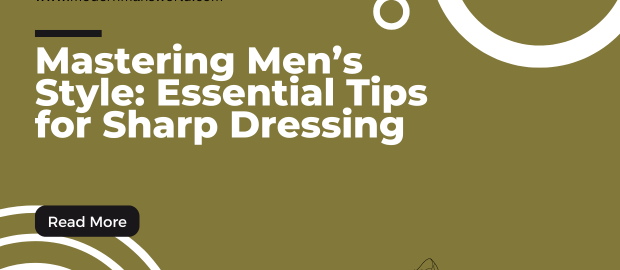
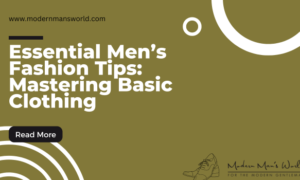
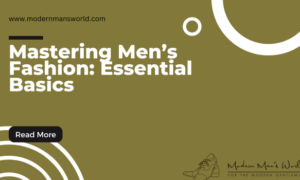
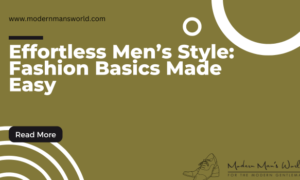
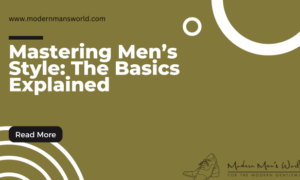
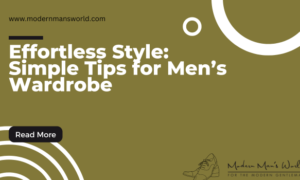
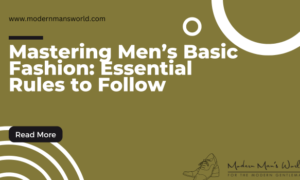
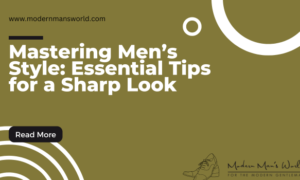






Comments are closed.